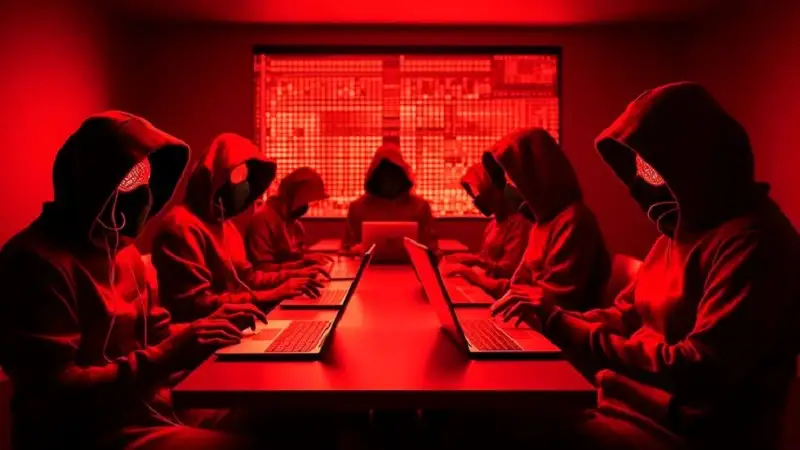The Phongsavanh Group Ransomware Scam a prominent business conglomerate, recently made headlines due to an alleged ransomware scam that targeted its operations. This incident underscores the growing threat of cyberattacks in today’s digital era and highlights the need for robust cybersecurity measures in large organizations. In this article, we will delve into the details of the ransomware scam, its impact on the Phongsavanh Group, and the broader implications for businesses worldwide.
Understanding the Phongsavanh Group
Phongsavanh Group Ransomware Scam is one of the largest and most influential conglomerates in Laos, with operations spanning banking, aviation, telecommunications, and more. Established with a vision of economic growth and innovation, the group has become a cornerstone of the Laotian economy.
Their success has made them a target for cybercriminals seeking to exploit vulnerabilities within their systems. The ransomware scam has brought attention to the importance of safeguarding not only financial assets but also sensitive data and operational continuity.
What is Ransomware?
Ransomware is a type of malicious software designed to block access to a computer system or data until a ransom is paid. Typically, cybercriminals infiltrate systems through phishing emails, malicious downloads, or unsecured networks.
In the case of the Phongsavanh Group, reports suggest that attackers deployed sophisticated ransomware, encrypting critical data and demanding payment in cryptocurrency to release the information.
The Phongsavanh Group Incident: Timeline of Events
The ransomware attack unfolded in several stages, each revealing vulnerabilities and the strategic operations of the attackers:
- Initial Breach: Hackers reportedly gained access through a phishing email that targeted key personnel within the group.
- System Compromise: Once inside, the attackers deployed ransomware, encrypting files across multiple departments.
- Ransom Demand: A message was sent to the Phongsavanh Group, demanding a substantial ransom in Bitcoin to decrypt the data.
- Public Revelation: As the company struggled to respond, details of the attack leaked online, leading to public scrutiny and concern over data breaches.
The Financial and Operational Impact
The Phongsavanh Group Ransomware Scam has had far-reaching consequences for the Phongsavanh Group:
- Financial Loss: The ransom demanded was reportedly in the millions, coupled with costs related to system recovery and cybersecurity upgrades.
- Operational Disruption: Key operations, especially in their banking and telecommunications divisions, were severely disrupted, leading to customer dissatisfaction.
- Reputation Damage: The breach undermined trust in the group’s ability to safeguard customer data, potentially affecting future business opportunities.
How Cybercriminals Exploit Organizational Weaknesses
The attack on Phongsavanh Group reveals common vulnerabilities that cybercriminals exploit:
- Phishing Emails: Employees may inadvertently click on malicious links, granting attackers access to internal systems.
- Lack of Cybersecurity Training: Without regular training, staff may fail to recognize and report suspicious activities.
- Outdated Systems: Legacy software often contains unpatched vulnerabilities, making it an easy target for hackers.
- Insufficient Backup Protocols: Many organizations lack robust data backup systems, leaving them at the mercy of ransomware demands.
The Response of the Phongsavanh Group
In the wake of the attack, the Phongsavanh Group Ransomware Scam took several measures to mitigate the damage and prevent future incidents:
- Engaging Cybersecurity Experts: The company collaborated with cybersecurity firms to assess and strengthen their systems.
- Data Recovery Efforts: Efforts were made to recover data without paying the ransom, though this process proved time-consuming.
- Public Communication: To maintain transparency, the group issued statements assuring customers that their data was being protected.
Despite these actions, the attack served as a wake-up call for the organization and the broader business community in Laos.
Lessons Learned from the Ransomware Scam
The Phongsavanh Group ransomware scam offers valuable lessons for businesses:
- Prioritize Cybersecurity: Investing in advanced security systems is essential to protect against evolving threats.
- Conduct Regular Audits: Regular assessments can identify and address potential vulnerabilities.
- Train Employees: Comprehensive training programs can help employees recognize and respond to cyber threats effectively.
- Implement Backup Systems:A robust backup strategy enables organizations to restore data without paying a ransom.
The Role of Government and Regulation
Governments and regulatory bodies play a crucial role in combating ransomware attacks. In response to this incident, the Laotian government may consider implementing stricter cybersecurity regulations and providing support to businesses in bolstering their defenses.
International cooperation is also vital, as ransomware gangs often operate across borders, making enforcement challenging without collaborative efforts.
Global Implications of the Ransomware Scam
The Phongsavanh Group Ransomware Scam attack is not an isolated incident; it reflects a growing global trend of ransomware targeting large organizations. Businesses worldwide can draw several takeaways:
- No Organization is Immune: Even well-established entities are vulnerable to cyberattacks.
- Collaboration is Key: Sharing information about attacks can help other organizations prepare and defend themselves.
- Emerging Technologies: AI and machine learning can be harnessed to detect and neutralize threats in real time.
Preventing Future Attacks: A Roadmap for Businesses
To prevent ransomware attacks, organizations should adopt a multi-layered approach:
- Invest in Technology: Advanced firewalls, intrusion detection systems, and endpoint protection are critical.
- Develop Incident Response Plans: Preparing for potential breaches ensures swift and effective action when attacks occur.
- Encourage Cyber Hygiene: Simple practices, such as using strong passwords and updating software, can significantly reduce risks.
- Engage Cybersecurity Partners: External experts bring specialized knowledge and resources to enhance security.
Conclusion:
The Phongsavanh Group ransomware scam serves as a stark reminder of the threats posed by cybercriminals in today’s digital landscape. By learning from this incident and implementing proactive measures, businesses can protect their operations, maintain customer trust, and secure their futures.
As technology evolves, so too will the tactics of cybercriminals. Staying ahead requires vigilance, investment, and a commitment to cybersecurity at every organizational level.
